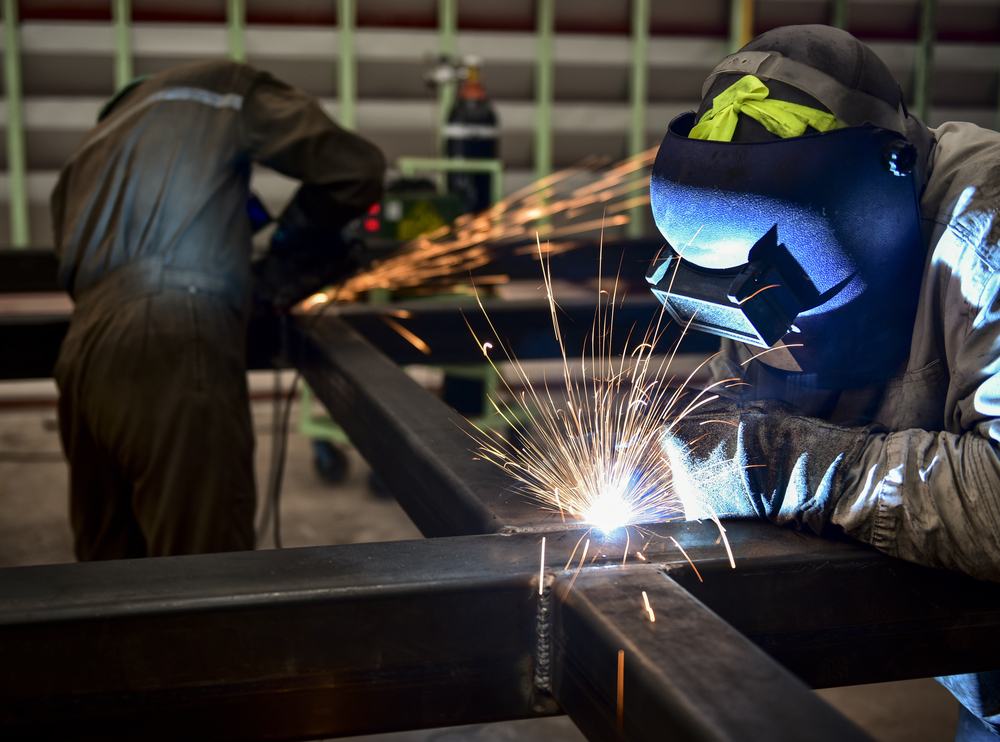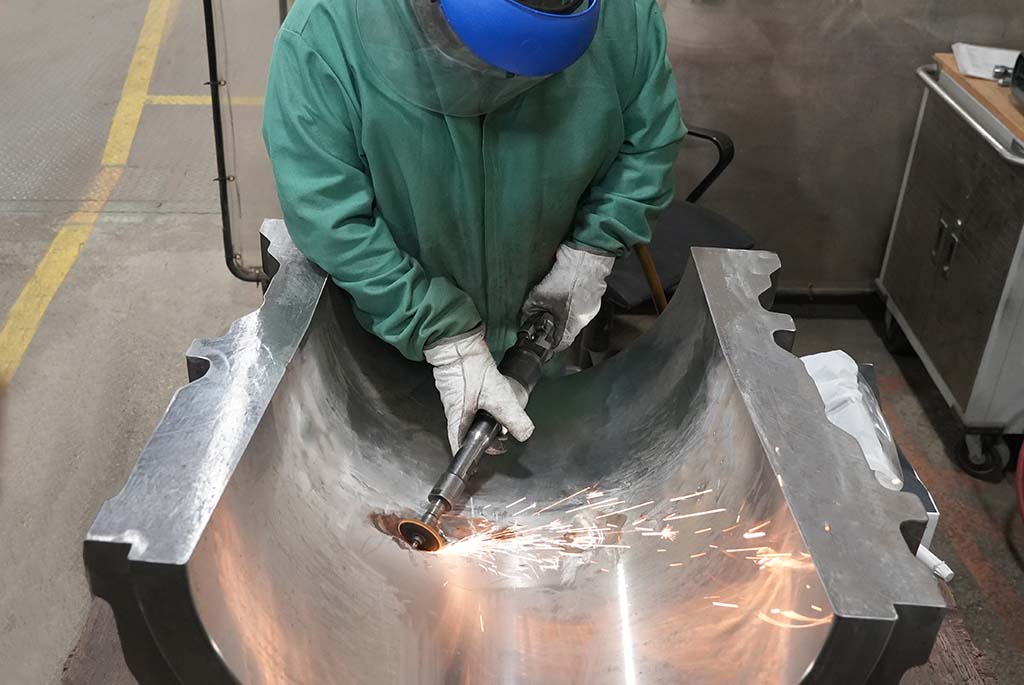Top advice from Belgrade Welding professionals
Typical Welding Repair Service Issues and Exactly How to Address Them Effectively
Welding repair services frequently experience a variety of problems that can endanger the honesty of the end product. Typical problems include poor infiltration, porosity, and imbalance, among others. Each defect provides one-of-a-kind obstacles that require details methods for resolution. Understanding these problems is essential for welders intending to improve their abilities and outcomes. This conversation will certainly explore these usual welding repair service issues and efficient methods to resolve them.
Inadequate Penetration
Inadequate penetration takes place when the weld steel falls short to totally fuse with the base material, causing weak joints and prospective structural failings. This issue frequently stems from inadequate warmth input, wrong electrode angle, or inappropriate welding speed. Welders might run into insufficient penetration due to a miscalculation of the necessary parameters for a details product density or type. Additionally, contamination on the base material's surface can impede effective bonding, aggravating the trouble. To attend to poor penetration, welders should assure ideal settings on their tools and preserve a tidy work surface area. Regular inspection of welds is recommended to recognize any type of deficiencies early, enabling for timely adjustments and the prevention of endangered architectural integrity in welded assemblies.
Porosity
Porosity is a typical issue in bonded joints that manifests as tiny gas bubbles entraped within the weld metal. This problem can compromise the stability of the weld, leading to minimized strength and prospective failing under tension. Montana Mobile Welding and Repair Fabrication. Porosity typically develops from contamination, dampness, or incorrect welding methods, which permit gases to run away right into the liquified weld pool. To address porosity, welders ought to assure proper surface preparation, keep a tidy working atmosphere, and use ideal welding criteria. Furthermore, picking the ideal filler material and protecting gas can mitigate gas entrapment. Normal inspection and testing of welds can help identify porosity early, assuring timely corrective actions are taken, thereby preserving the quality and integrity of the welded structure
Imbalance
Misalignment in welding can occur from numerous factors, consisting of incorrect arrangement and thermal growth. Understanding the origin is vital for efficient resolution. Numerous adjustment techniques are readily available to realign components and assure structural honesty.
Root causes of Imbalance
Welding imbalance frequently stems from a variety of underlying concerns that can jeopardize architectural integrity. One primary reason is inappropriate fit-up of elements before welding, which can result in voids and unequal surfaces. Variants in thermal growth throughout the welding process can also cause distortion, particularly if the products being signed up with have various coefficients of expansion. Furthermore, poor clamping and fixturing may fail to hold parts firmly in position, resulting in motion throughout welding. Improperly maintained devices, consisting of welding equipments and tools, might introduce variances in the weld bead, more adding to imbalance. Operator error, stemming from insufficient training or experience, can also play a substantial function in creating misaligned welds.

Modification Techniques Offered
Dealing with misalignment properly calls for a mix of rehabilitative strategies customized to the details concerns handy. One common technique is using jigs or components to hold parts in the right placement throughout welding, guaranteeing consistent placement. Furthermore, preheating the products can help in reducing distortion and enhance fit-up. For significant imbalance, mechanical adjustment methods, such as making use of hydraulic jacks or clamps, can be used to correct the placement before welding. Post-weld heat treatment might additionally be needed to eliminate anxieties caused by imbalance. Ultimately, cautious evaluation and modification during the arrangement stage can protect against imbalance problems from ending up being considerable problems, promoting a smoother welding procedure and improving general architectural integrity.
Distortion
Distortion is a common difficulty in welding that can emerge from numerous factors, including unequal heating & cooling. Understanding the root causes of distortion is necessary for applying reliable avoidance strategies. Resolving this problem not just enhances structural stability yet additionally boosts the total top quality of the weld.
Reasons of Distortion
When based on the extreme heat of welding, products usually undertake adjustments that can lead to distortion. This phenomenon primarily develops from thermal growth and tightening during the welding process. As the weld location warms up, the material broadens; upon air conditioning, it contracts, which can produce inner stress and anxieties. On top of that, unequal home heating throughout a work surface can intensify these stresses, resulting in warping or bending. The type of material likewise plays a substantial role; metals with varying thermal conductivity and coefficients of development may respond differently, resulting in unpredictable distortions. Furthermore, bad joint design and insufficient fixturing can add to misalignment throughout welding, enhancing the chance of distortion. Understanding these causes is vital for effective welding repair and prevention strategies.
Avoidance Techniques
Effective avoidance techniques for distortion during welding focus on regulating heat input and guaranteeing proper joint layout. Maintaining a regular warm input helps to minimize thermal expansion and tightening, which can lead to distortion. Utilizing strategies such as pre-heating the work surface can also decrease the temperature slope, advertising uniform heating. Additionally, choosing ideal joint layouts, such as T-joints or lap joints, can improve stability and lower tension concentrations. Applying proper fixturing to protect the workpieces in area further aids in preserving alignment throughout the welding procedure. Staggered welding sequences can distribute heat more uniformly, stopping localized distortion. By using these approaches, welders can greatly reduce the likelihood of distortion and enhance the overall top quality of their welds.
Breaking
Cracking is an usual concern come across in welding repair work, usually resulting from different elements such as improper cooling rates, product selection, or poor joint prep work. The incident of splits can greatly jeopardize the stability of the weld, bring about potential failures during operation. To address this problem, welders have to initially examine the origin, making sure that products work and suitably selected for the details application. Furthermore, controlling the air conditioning price during the welding process is crucial; fast cooling can induce anxiety and cause breaking. Appropriate joint style and prep work additionally add to minimizing the risk. Implementing these techniques can improve weld high quality and longevity, eventually decreasing the chance of splitting in finished weldments.

Insufficient Fusion
A substantial issue in welding repairs is incomplete fusion, which occurs when the weld steel does not sufficiently bond with the base material or previous weld passes - Montana Mobile Welding and Repair Fabrication. This defect can lead basics to weak points in the joint, possibly compromising the stability of the bonded framework. Aspects adding to incomplete combination consist of not enough warm input, inappropriate welding method, and contamination of the surface areas being signed up with. To address this problem effectively, welders must guarantee proper pre-weld cleansing and surface area prep work, along with change their welding parameters to attain adequate penetration and blend. Regular inspection throughout the welding procedure can also assist determine insufficient combination early, permitting timely rehabilitative procedures to enhance the overall quality of the weld
Overheating
While welding fixings can boost architectural stability, overheating presents a significant obstacle that can result in product degradation. Too much warm during welding can modify the mechanical residential or commercial properties of steels, causing reduced toughness, increased brittleness, and warping. This sensation is particularly vital in high-stress applications where architectural integrity is critical. Determining overheating can entail visual examinations for discoloration or distortion, in addition to keeping track of temperature level throughout the welding procedure. To mitigate the dangers linked with getting too hot, welders should use ideal methods, such as controlling warmth input, readjusting traveling speed, and making use of ideal filler products. Additionally, applying pre- and post-weld warmth treatments can help restore material homes and boost the overall high quality of the repair work, ensuring lasting performance and security.
Frequently Asked Questions
What Are the Usual Signs of a Welding Defect?

Just How Can I Evaluate My Welds for Quality?
To check welds for top quality, one can utilize visual evaluations, ultrasonic testing, and radiographic approaches. Each method assures architectural welding cast iron stability, determines flaws, and verifies adherence to specified criteria, eventually enhancing the dependability of the welded joints.
What Safety Preventative Measures Should I Take While Welding?
When welding, one must prioritize safety by check my blog putting on ideal individual safety devices, making sure appropriate air flow, safeguarding combustible products away, preserving a clean work space, and knowing surroundings to stop injuries and accidents.
Can I Fix a Weld Without Redesigning the Entire Joint?
Repairing a weld without redoing the whole joint is possible, relying on the damage (Belgrade Fabrication). Strategies such as grinding, adding filler material, or using a welding procedure can efficiently deal with certain imperfections while maintaining the bordering framework
What Devices Are Vital for Effective Welding Services?
Important tools for reliable welding repair services include a welding maker, cord brush, grinder, protective equipment, clamps, and filler materials. Each device plays a crucial role in guaranteeing top quality and safety and security throughout the repair process. Porosity typically arises from contamination, dampness, or improper welding methods, which permit gases to run away right into the liquified weld swimming pool. Badly maintained devices, including welding devices and tools, may present inconsistencies in the weld bead, further contributing to misalignment. When subjected to the extreme warm of welding, products frequently undertake changes that can lead to distortion. Splitting is a typical concern run into in welding repairs, typically resulting from various aspects such as inappropriate cooling rates, product option, or insufficient joint preparation. A substantial problem in welding fixings is insufficient blend, which occurs when the weld metal does not sufficiently bond with the base material or previous weld passes.